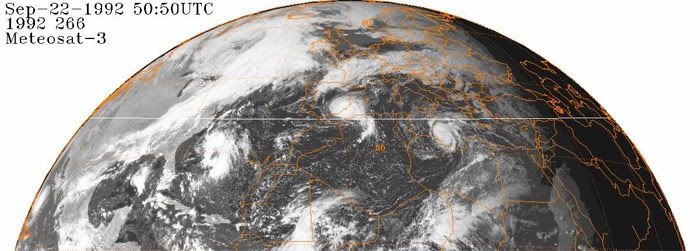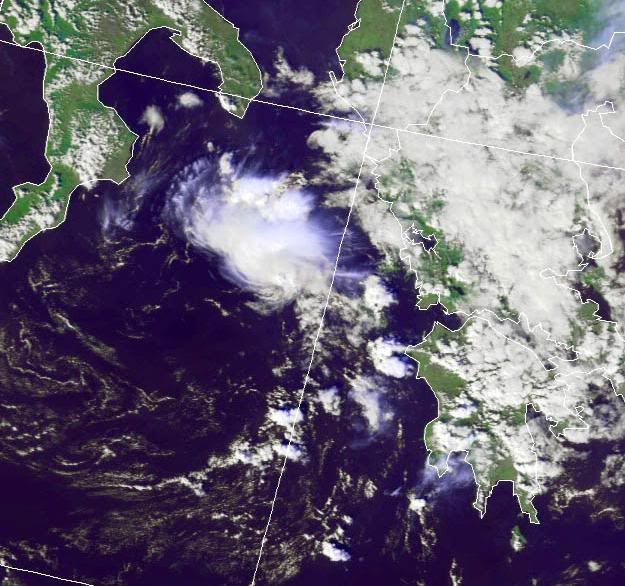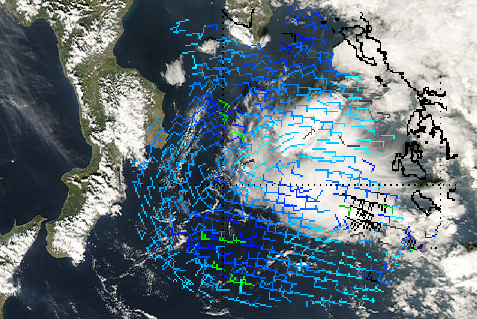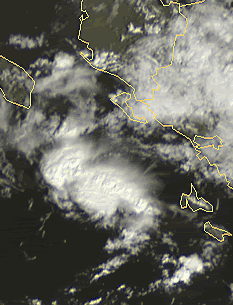O Jeff Master do Wunderground falou hoje do sistema de Espanha e diz que provavelmente foi um sistema com algumas características hibridas, embora predominantemente não tropical.
De qualquer forma, o sistema ainda não morreu, e manteve hoje alguma convecção entre o sul de Espanha e Marrocos, e o Tropical RADMSIS do CIRA (Cooperative Institute for Research in the Atmospher) colocou esta manhã um floater sobre ele, ou seja, pelo menos está a despertar a curiosidade cientifica/meteorológica. Mas parece estar agora a dissipar.
"Medicane" (Medepression?) hits Spain
A tropical storm-like system swept over the island of Majorca in the Mediterranean on Wednesday, triggering flooding that killed two people. The storm then made landfall on the Mediterranean coast of Spain yesterday morning near the city of Murcia. The satellite presentation of the storm at landfall (Figure 1) showed well-formed spiral bands and a cloud-free center. Murcia, Spain reported sustained winds of 30 mph, gusting to 45 mph, at 14 GMT Thursday. A personal weather station in Santa Pola recorded sustained winds of 40 mph, gusting to 45 mph, and 0.68 inches of rain during passage of the storm. We have a number of other personal weather stations in the region, but none reported higher winds, or a pressure lower than 1013 mb. Radar from the Spanish Instituto Nacional de Meteorologia (Figure 2) showed some well-organized banding. The UKMET model did not indicate the storm had a warm core, so this was likely not a true tropical depression. Sea surface temperatures were about 23° C (about 1° C warmer than normal) under the storm, which is quite a bit colder than the 26.5° C usually associated with tropical storm formation. The satellite presentation suggests that the storm was probably generating a shallow warm core near the surface, and was getting some of its energy from release of latent heat--the same energy source that powers tropical cyclones. Yesterday's "Medepression" was probably a hybrid tropical/extratropical storm, and was predominantly non-tropical.
Warm-cored hybrid storms have been reported in the Mediterranean Sea before, and there is a large body of scientific literature published on the subject (see below). These storms can become quite severe and cause considerable damage. However, there is no system in place to name these storms, and the National Hurricane Center is not responsible for issuing warnings in the Mediterranean Sea. There are quite a few "Medicanes" in past years that would have earned names as subtropical storms had NHC been responsible for warnings in the Mediterranean Sea. There is concern that global warming may raise sea surface temperatures enough in the Mediterannean later this century to allow full-fledged hurricanes to form and threaten the densely populated cities that dot the coast.
De qualquer forma, o sistema ainda não morreu, e manteve hoje alguma convecção entre o sul de Espanha e Marrocos, e o Tropical RADMSIS do CIRA (Cooperative Institute for Research in the Atmospher) colocou esta manhã um floater sobre ele, ou seja, pelo menos está a despertar a curiosidade cientifica/meteorológica. Mas parece estar agora a dissipar.










